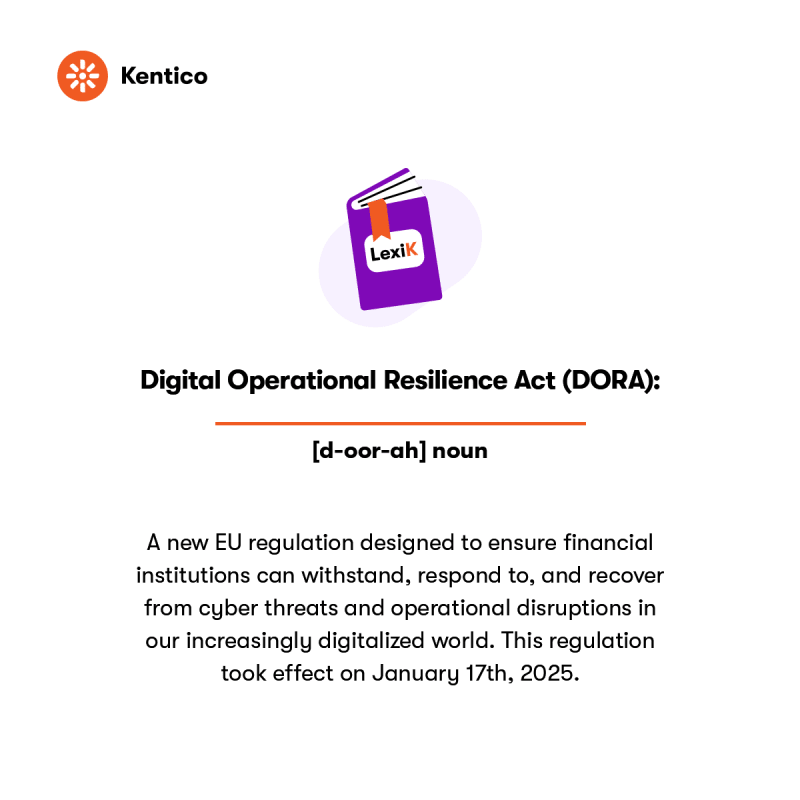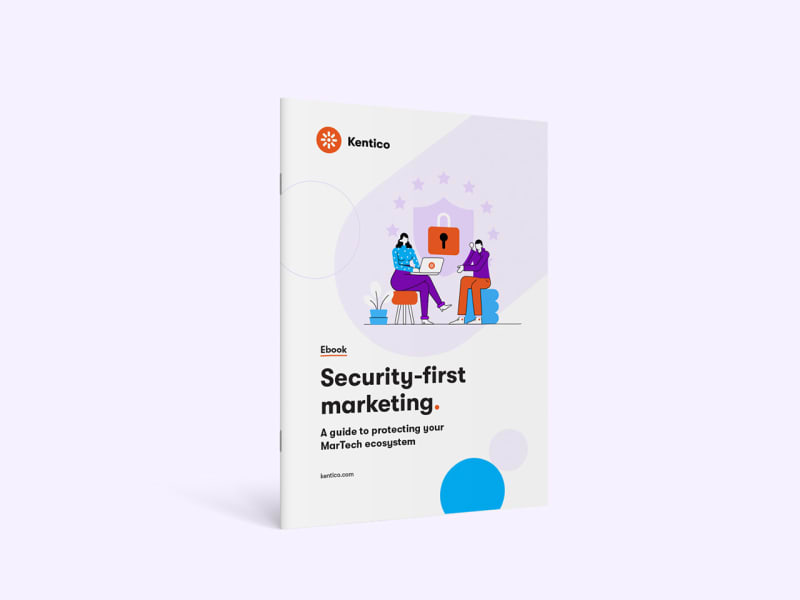Cyber threats and digital disruptions are on the rise, putting financial institutions at greater risk than ever. DORA is the EU’s response, ensuring financial entities can withstand, respond to, and recover from IT and cyber incidents. This article explores why DORA matters, what it means for your institution, and how compliance can strengthen security, build trust, and provide a competitive edge.
Financial institutions are facing a surge in cyber threats and operational risks as the digital landscape evolves. In 2024, 46% of global financial companies reported a data breach in the past 24 months. From sophisticated cyberattacks to operational disruptions, the stakes have never been higher. To address these growing challenges, the European Union introduced the Digital Operational Resilience Act (DORA)—a regulation designed to enhance the digital security and resilience of financial entities.
What is DORA?
DORA came into force on January 16, 2023, with compliance requirements fully applicable from January 17, 2025. This EU regulation impacts more than just Europe–worldwide financial institutions that
The Digital Operational Resilience Act (DORA) is a critical EU regulation aimed at strengthening the cybersecurity and operational resilience of financial institutions and their third-party service providers. By setting clear rules and a standardized framework, DORA helps organizations withstand, respond to, and recover from cyber threats and IT disruptions, ensuring business continuity.
DORA applies to a broad spectrum of organizations, including banks, insurance companies, investment firms, and third-party IT providers. By creating uniform regulations, it reduces inconsistencies in digital security practices across the EU, making it easier for institutions to meet compliance standards.

Why is DORA important for financial institutions?
DORA is more than just a regulation—it’s a proactive approach to safeguarding financial institutions against digital risks.
In 2023, several reputable European banks, including Deutsche Bank, ING Bank, Postbank, and Comdirect, experienced cyberattacks due to a third-party vendor facilitating file transfers. The affected vendor, Majorel, was compromised through a vulnerability in the MOVEit file transfer system. This breach exposed sensitive customer information, such as names and International Banking Account Numbers (IBANs), potentially enabling unauthorized direct debits.
One key aspect of DORA is its focus on third-party risk management, requiring financial institutions to closely monitor and assess the cybersecurity practices of their service providers. Under DORA’s regulations, the banks affected by the 2023 cyber-attack would have been required to conduct rigorous due diligence on their third-party vendor’s security protocols—potentially preventing the breach and protecting sensitive customer data.
Here are more reasons why DORA is a crucial step toward a more secure and resilient financial sector:
- Rising cyber threats: The financial sector is a prime target for cyberattacks, which are becoming more frequent and sophisticated. DORA provides the framework to protect your institution from the growing cyber threat landscape.
- Clearer regulations across the EU: DORA standardizes cybersecurity regulations across the EU, ensuring that financial institutions and their service providers adhere to the same high standards, reducing confusion and improving compliance efforts.
- Ensures business continuity: DORA helps institutions maintain seamless operations, even in the event of a cyberattack or IT disruption, minimizing downtime and protecting revenue streams.
- Builds consumer and investor trust: By complying with DORA, your institution demonstrates a commitment to robust cybersecurity, fostering greater confidence from customers, investors, and other stakeholders.
Why should financial institutions comply with DORA?
In 2024, several European financial institutions faced significant cyber threats, underscoring the critical need for robust cybersecurity measures. AXA, ABN Amro, and Febelfin were hit by large-scale Distributed Denial of Service (DDoS) attacks, with data volumes reaching up to one terabit per second, severely disrupting their operations. Meanwhile, the European Investment Bank (EIB) was targeted by cybercriminals, causing disruptions to their websites, including eib.org and eif.org.
These incidents demonstrate the increasing vulnerability of EU-based financial institutions, reinforcing why regulations like DORA are critical to enhancing digital resilience and ensuring that institutions are better equipped to withstand, respond to, and recover from such attacks.
And if the threat of cyberattacks wasn’t enough, DORA brings a range of other compelling reasons for institutions to take compliance seriously:
- Avoid legal and financial penalties: Failure to comply with DORA’s regulations can result in costly consequences—financial institutions may face fines of up to 2% of their total annual worldwide turnover. Individuals could be fined up to €1,000,000, and third-party providers may face penalties as high as €5,000,000, with individuals within those organizations potentially liable for fines up to €500,000. Non-compliance can lead to significant legal issues, reputational damage, and financial loss. It’s far more costly to handle penalties than to invest in compliance upfront.
- Better risk management: DORA’s framework helps institutions proactively identify and mitigate cyber risks, reducing the chance of costly incidents and safeguarding business continuity.
- Gain a competitive edge: Institutions that demonstrate strong cybersecurity practices by complying with DORA stand out in a crowded marketplace, winning the trust of customers and partners.
- Strengthen supplier oversight: DORA requires institutions to monitor and manage third-party IT providers, reducing risks in the supply chain and ensuring that your entire ecosystem operates with resilience.
Software solutions to support DORA compliance
Several software solutions can assist financial institutions in achieving and maintaining DORA compliance efficiently:
3rdRisk: A comprehensive third-party risk management platform with automated workflows and a DORA compliance blueprint to help institutions stay on track.
Syteca: Designed to manage insider risk, Syteca helps organizations meet DORA requirements with an emphasis on secure data handling.
OneTrust: A comprehensive compliance solution offering ICT risk management, third-party monitoring, and audit tools for DORA compliance.
SAI360: A cloud-based platform that provides compliance and resilience management tools that support DORA regulations.
Fortra: A cybersecurity solution helping organizations and their third-party providers meet DORA standards with proactive security measures.
As a trusted partner to financial institutions, Kentico understands the challenges of navigating complex regulations like DORA. Xperience by Kentico meets high security standards with ISO 27001 certification and SOC 2 Type 2 certification, ensuring strong data protection and operational resilience.
With broad integration capabilities, Xperience by Kentico seamlessly connects with a wide range of third-party tools, enabling financial institutions to implement secure and resilient digital solutions within their existing environment. This flexibility supports organizations in meeting regulatory requirements while maintaining their current infrastructure and operations.
Best practices for achieving DORA compliance
To ensure DORA compliance and enhance your institution’s operational resilience, consider implementing the following best practices:
1. Conduct regular risk assessments
Identify vulnerabilities within your IT infrastructure and address them proactively. DORA requires ongoing risk assessments to stay ahead of evolving threats.
2. Implement a strong cybersecurity framework
Adopt industry-standard cybersecurity tools such as firewalls, encryption, multi-factor authentication, and continuous monitoring to protect your systems from attacks.
3. Develop an in-depth incident response plan
Establish clear protocols for detecting, responding to, and recovering from cyber incidents. Speed and precision in your response are critical to maintaining operations and customer trust.
4. Ensure third-party compliance
Monitor and evaluate the security practices of your third-party IT providers. Supply chain risks can compromise your institution’s digital resilience, so strong oversight is essential.
5. Train employees regularly
Regular cybersecurity training ensures that all employees understand their role in safeguarding your institution’s operations. A well-informed workforce strengthens your overall security posture.
6. Maintain detailed documentation
Keep thorough records of security measures, incidents, and recovery actions. This will not only demonstrate compliance during audits but also provide valuable insights for future improvements.

"Think about how to embrace these regulations into your journey rather than trying to work around them. Regulations generally exist for the purpose of protecting customers, and that's where the goal of a marketer aligns with the regulation. Translating a must-have into an improvement for your visitor's experience and positive bran emotion is a smart thing to do."
DORA: Key to your institution’s long-term success
DORA compliance isn’t just about following a regulation—it’s about fortifying your institution’s digital resilience in an era where cyber threats are constantly evolving. Financial institutions that take DORA seriously can protect their operations, protect sensitive data, and bolster consumer and investor confidence.
Complying with DORA gives you a competitive advantage by proving to customers and partners that your institution is secure and prepared for any challenge that comes its way.
Do you want to learn more about finance regulations and how they impact your institution? Explore insights from industry experts about navigating the evolving regulatory landscape.
Security isn’t just IT’s job—it’s a marketing priority. Get practical solutions for protecting your MarTech ecosystem—download our free ebook, Security-first marketing.


